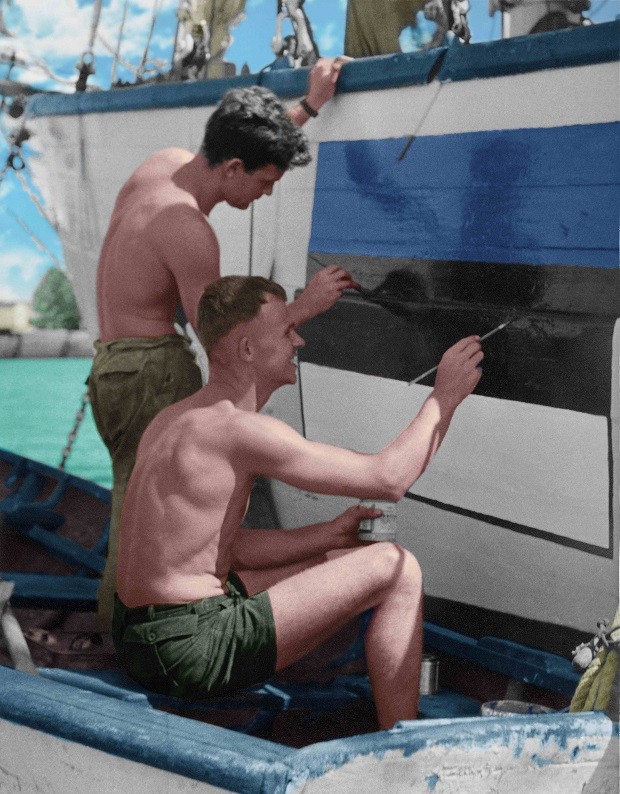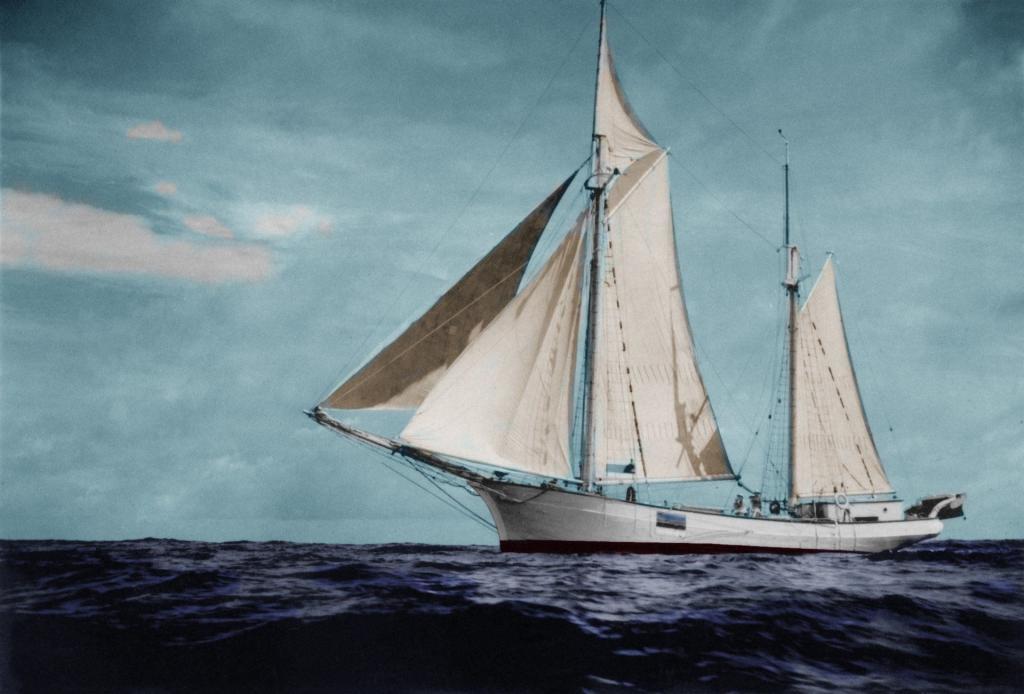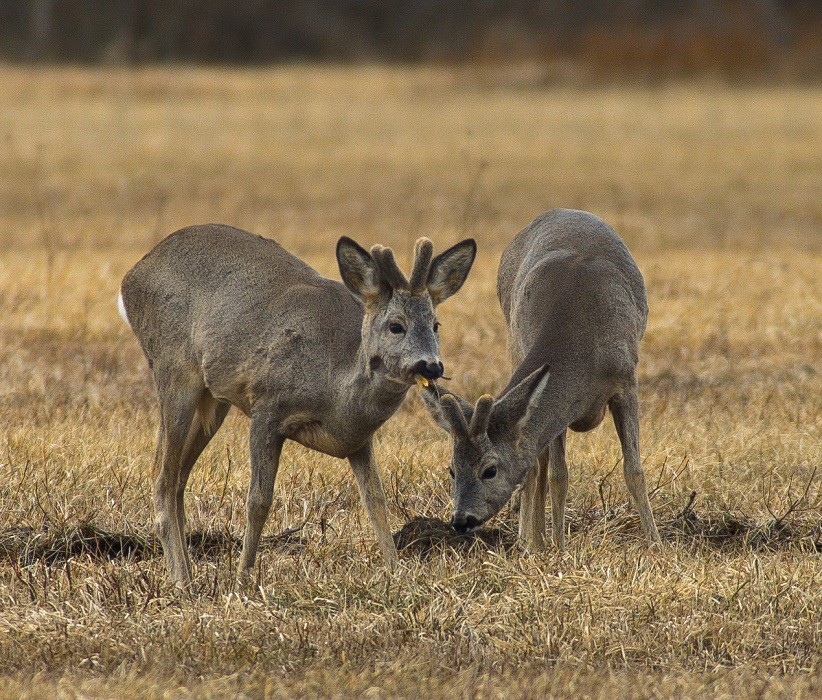Many long-awaited Estonian documentaries will premiere in 2018 and all of them are fitting in their own way to celebrate the 100th birthday of the nation.
This article is published in collaboration with the Estonian Film Institute.
The new documentaries look to the past more than to the modern day. We can say the trend started in 2017 with the most successful documentary domestically and at festivals – Terje Toomistu’s “Soviet Hippies”. In the film, the anthropologist, Terje Toomistu, reveals the recent history of an occupied country through a new spirituality. She shows us the souls who found an alternative lifestyle and breath of fresh air in the hippie movement. The documentary is travelling to a lot of cinema screens in other countries in 2018 and spreading its fun message of peace and love.
A trip around the world
Another long-awaited film that will hopefully travel to a lot of festivals, “Ahto: Chasing a Dream”, has been completed and will premiere domestically in March 2018.
 It talks about globetrotter Ahto Valter, the first Estonian to travel around the world. At the age of 14, he was already working as a sailor on the fanciest ship in the Baltics, the Stormbird, and by the age of 17, he’d sailed his own boat to America. Although his life was full of other exciting adventures and twists and turns, his most remarkable feat was his trip around the world in 1938, where he sailed under the Estonian flag with his wife and 14-month son Ted as his companions.
It talks about globetrotter Ahto Valter, the first Estonian to travel around the world. At the age of 14, he was already working as a sailor on the fanciest ship in the Baltics, the Stormbird, and by the age of 17, he’d sailed his own boat to America. Although his life was full of other exciting adventures and twists and turns, his most remarkable feat was his trip around the world in 1938, where he sailed under the Estonian flag with his wife and 14-month son Ted as his companions.
Throughout the years, director Jaanis Valk has been collecting unique archive material and conducting interviews with people who remember Valter. Ahto left the independent Estonia as a free man and never saw his country free again due to the complications of World War II. His feats remained largely unheard of due to the Soviet propagandist treatment of history.
Now there is an ethnographically and historically dignified documentary full of fabulous archival footage, allowing people to relive Ahto’s trip around the world.
Taming a wild country
The DocPoint festival’s 2018 opening film in Estonia and Finland was a fast-paced and politically suspenseful Estonian documentary about the first post-occupation government of Estonia, run by the 32-year-old prime minister, Mart Laar. The title, “Rodeo: Taming a Wild Country”, gives a pretty obvious clue to how tempestuous a time it was, taking a country from the grips of a crumbling, socialist giant into the blissful arms of capitalism. They were wild years full of wild actions that we are still telling legends and writing books about.
The film portrays one historical perspective of how a country was saved from its economic collapse by the help of friends abroad. Thanks to the reforms that took place at the beginning of the 1990s, Estonia still enjoys a “good boy” status in Eastern Europe. But all of that came at a price.
Directors Raimo Jõerand and Kiur Aarma – both of who have had their films screened by many TV stations around the world – have made a surprisingly humorous film about the difficult decisions made.
Struggle in nature
Thanks to a special fund created for the 100th anniversary of the Republic of Estonia, two very special documentary projects are also in the works. Estonia’s noble nature documentary tradition is being carried by the brightest star of the new generation, director-cinematographer Joosep Matjus. He has spent very little time in the city these past few years as the filming of Estonian nature has demanded the best out of him.
His documentary, “The Wind Sculpted Land”, takes us through snowy winters, bright green springs, voluptuous summers and colourful winters. The film is a story told through the adventure of the young moose yearlings – it’s about their hard struggle to manage on their own and peculiar interactions with the wildlife that surrounding them.
In a land shaped by wind, many different strollers inhabit nature. Some by wings, some by paws, some living on flesh while some gently chew on grass. This film will give the audience a unique view of the nature and the behaviour of moose, following them for a whole season. The film takes place at one of the largest coastal meadows in Europe, in Matsalu National Park, located on the west coast of Estonia.
A female perspective
The second documentary project made for Estonia 100 brings together six female Estonian documentary filmmakers from different generations – Nora Särak, Aljona Suržikova, Heilika Pikkov, Anna Hints, Moonika Siimets and Kersti Uibo. The collection of short documentaries, “Roots”, tells six very personal stories. They are stories about birth and death, being alone and together, great joy and great sadness. They are told honestly and bravely from a female perspective.
The authors are well known female Estonian directors between the ages of 29-61 who are also mothers, daughters and wives; and why not lovers or world travellers. The central symbol of the collection is the root, a vital organ. Roots don’t have leaves, but they may grow buds that sprout above the ground. The root is the beginning, the origin, the starting point, the cause. The six short films are joined together by talented puppet animation director Anu-Laura Tuttelberg’s fantastic animations.
A journey into the soul of a man
Award-winning director Jaak Kilmi’s new documentary film, “Girl From Nowhere”, tells an unbelievable story about a KGB agent who left the Soviet Union for the US, and his daughter Ieve Lešinska, who had to change her identity and name and forget her Latvian heritage. This is a true political thriller from the Cold War era – a story that can be found, despite the uniqueness of each case, in many societies from behind the Iron Curtain. It’s a very personal and emotional, crazy family story about identities broken by political games and searching for one’s past – made as a co-production between Latvia, Estonia, Germany and the Czech Republic.
Another sweet tidbit for the true cinephile is being made in cooperation between the three Baltic countries. The film, “Baltic New Wave”, is like a journey into the soul of a man through the history of poetic documentary filmmaking from Baltic countries. This is a story about a unique phenomenon in the history of cinema – the Baltic school of poetic documentary and its creators.
The filmmakers from Estonia, Latvia and Lithuania broke the dogmatic poster-like propaganda documentary tradition in the Soviet Union in the 1960s by creating films that were totally different: humane, meaningful and poetic.
The journey leads to the grand masters of Baltic poetic documentary – Uldis Brauns, Aivars Freimanis, Mark Soosaar, Andres Sööt, Robertas Verba, Henrikas Sablevicius, their films and a unique collection of archival material. The film will enrich the canons of all three countries celebrating their 100th anniversaries this year in a touching and uplifting way. It will also serve to draw light to one special place in the history of world cinema.
I
Cover: A screenshot from “Ahto: Chasing a Dream”. Read more from the Estonian Film Magazine. The Estonian Film Magazine is published since 2013, twice a year, by the Estonian Film Institute. Every issue informs the readers on the news about the Estonian film productions, publishes reviews of new titles and interviews with film professionals.




